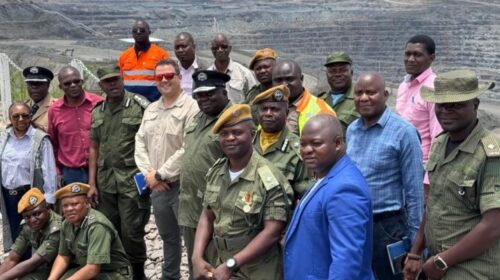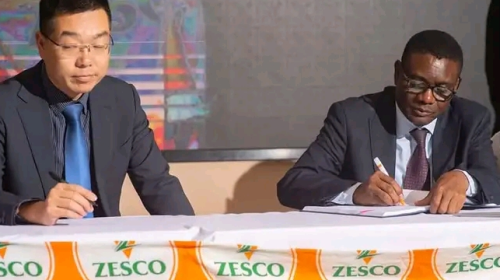Zambia Moving Beyond Copper
Regardless of its endowment of vast stretches of agricultural land and mineral wealth beyond copper, Zambia has traditionally chosen to rely on copper mining to drive growth. In an effort to decrease its dependence on the mining sector, which accounts for 12% of GDP and 75% of export earnings, the government has been pursuing economic diversification since 1970, and in recent years, under its ‘Vision 2030’ and the Seventh National Development Plan (7NDP) 2017 – 2022, it plans to elevate the tourism, energy, agriculture and manufacturing sectors to shield the economy from the adverse effects of commodity price fluctuations, as well diversifying to mining other metals than copper.
“The Zambian Government has been attempting to reduce the country’s reliance on copper and exploit other sectors. I believe the mining industry can play a catalytic role in the diversification agenda,” highlighted Chipata, CEO of ZCCM-IH. “As we continue to secure and increase returns from the mining industry, these can be reinvested to fund diversification into other sectors such as agriculture or tourism. Cobalt and especially gold can offer the necessary financing to move the Zambian economy beyond copper.”

“I believe the mining industry can play a catalytic role in the diversification agenda. As we continue to secure and increase returns from the mining industry, it can be reinvested to fund diversification into other sectors such as agriculture or tourism. Cobalt, and especially gold, can offer the necessary financing to move the Zambian economy beyond copper.”
Mabvuto Chipata, CEO, ZCCM-IH
Even though copper takes central stage in the Zambian mining industry, the country has vast reserves of gemstones such as tourmaline and aquamarine, but emeralds are the country’s crown jewel as Zambia accounts for 20% of global emerald supply as a result of their high-quality due to high levels of chromium with deposits located near the Kafubu river in the Ndola Rural Restricted Area. The Kagem emerald mine in northern Zambia is the world’s single largest producer of emeralds, majority-owned by British company Gemfields (75%). While Colombia has long been at the forefront of emerald mining, Zambian emeralds have recently gained momentum due to their greater level of clarity and durability.
Gold is also in attracting attention. “Gold and to a lesser extent battery metals such as lithium and nickel are in the spotlight at the moment in Zambia,” explained Evans Kanche, managing director of the Association of Zambian Mineral Exploration Companies. “Significant findings of alluvial gold in the North-Western province have led to the metal being viewed as strategic by the government and efforts to promote its exploration and production are being undertaken. Legislation is to be put in place to facilitate the rise of the gold mining industry in Zambia. Exploration in Zambia has, however, in the past mainly focused on copper.”
ZCCM-IH has prioritised investment in gold mining to harness the nation’s gold potential and is forging partnerships with players in the value chain. A partnership ZCCM-IH signed with Karma Mining Services and Rural Development (Karma), for example, will develop a gold processing and trading operation in Zambia through their subsidiary Consolidated Gold Company Zambia (CGCZ), initially by sourcing most of the gold ore from artisanal and small-scale gold miners. 10 milling plants have already been built with a combined processing capacity of 30 mt of ore material per leach. The initial target for the gold milling plants is approximately 7.5 kg per month. Meanwhile, the national target for gold production from both primary and secondary sources for 2020 is 40 mt.
ZCCM-IH also signed a US$2.5 million deal with US-based mining services firm Array Metals in May of 2020. Array Metals, holding a 35% interest in the JV, will work with CGCZ on the construction of a gold wash plant and mining machinery to mine and process gold. The project aims to produce 3 mt of gold within the next two years.
Another gold project in Zambia making headlines that has made progress in 2020 is the Kansenseli gold mine in the Mwinilunga district, owned by the Zambia Gold Company and the Ministry of Finance. The first phase of diamond drilling commenced in April of 2020, and between April and October, 50 kg of gold have been produced.
It is hoped that diversification initiatives in mining will benefit the wider economy. “The gold mining industry in Zambia is relatively young and is recently attracting attention from investors. We know that there will be use of lime in the value chain, so we are targeting future gold mines locally,” commented Joy Simwaba, CEO of Limestone Resources, market leader in the production and supply of limestone across Zambia. “The Kasenseli gold mine project in the northwest is making progress, as well as other projects in the eastern province. Meanwhile in Kabwe, central Zambia, mining activities are increasingly focused on zinc, with Sable Zinc at the helm. As Zambia’s mining industry grows, so do we.”
Zambia is home to one of the highest-grade zinc deposits in the world. 20 km north of Lusaka is the Star Zinc mine, which has been intermittently mined for decades and is currently majority owned by AIM-listed Galileo Resources. Star Zinc is likely to supply up to 60,000 mt/y to Jubilee’s Kabwe zinc refinery after obtaining a small-scale mining permit in Q2 of 2021.
Nickel mining is dominated by Consolidated Nickel Mines (CNM) operating its world-class asset, the underground Munali nickel mine, 75 km west of Lusaka, which has been under care and maintenance since 2014 and resumed production in 2019 after years of uneconomic operations. The new management team was able to increase production to over 300 mt per month within five months in 2020. “The global electric vehicle fleet expanded significantly over the last decade, and the associated Ni sulphide demand for use in EV batteries is expected to increase by at least 60% over the next five years,” highlighted Anton Mauve, CEO of CNM. “CNM is well positioned to produce nickel sulphate which is used in the production of batteries. Demand from China and, in particular, its growth of the electric vehicle industry will be pivotal in determining the supply of battery metals. I am very bullish about nickel and so are my investors.”

“The global electric vehicle fleet expanded significantly over the last decade, and the associated Ni sulphide demand for use in EV batteries is expected to increase by at least 60% over the next five years. CNM is well positioned to produce nickel sulphate that is used in the production of batteries.”
Anton Mauve, CEO, Consolidated Nickel Mines
Operational Challenges: The Electricity Crisis
The mining sector in Zambia is hampered due to disruptions caused by power cuts and droughts. There has been a 36% increase in demand for power in the past decade due to economic growth and new mines development resulting in a growing power deficit. The energy market is constrained by the position of the Zambia Electricity Supply Corporation (ZESCO), the state-owned power company struggling to meet demand due to the lack of clarity on whether or not other producers will be granted the permission to produce electricity, as well as other problems ZESCO faces with regard to its profitability, liquidity and efficiency. “The cost of power increased by at least 25% towards the end of 2019. National access to electricity averages 35%. Some of those who do not have access to the national grid rely on stand-alone renewable energy sources, such as solar and hydroelectric power sources,” commented Kelvin Simwanza, managing director of NEI Investments, an indigenous engineering company. “Zambia is heavily reliant on hydro based electricity generation, representing 85% of installed capacity. However, hydropower has a fatal flaw: droughts and lack of rain lower water levels result in electricity shortages and prolonged blackouts. Consequently, businesses struggle to operate. Therefore, the government is exploring thermal, wind and solar power solutions.”


“The Kasenseli gold mine project in the northwest is making progress, as well as other projects in the eastern province. Meanwhile in Kabwe, central Zambia, mining activities are increasingly focused on zinc, with Sable Zinc at the helm. As Zambia’s mining industry grows, so do we.”
Joy Simwaba, CEO, Limestone Resources
Zambia has 2,800 MW of installed capacity, of which 85% is hydro based, according to the USAID. The government set a goal in 1996 for universal electricity access by 2030; the current access rate stands at 31% and, in 2019, electricity outages were unprecedented as power was disrupted for periods as long as 16 hours a day.
Projects have been initiated to address the deficit by diversifying into solar and wind power, as chronic droughts cut production at Zambia’s massive dams on the Zambezi and Kafue rivers. One of these is the Japanese Renewable Energy Company investment of US$200 million to develop two solar power projects supplying 135 MW and 65 MW in northern Zambia and in the Copperbelt, respectively.
Addressing the electricity deficit is pivotal to the nation’s economic growth and will facilitate diversification as it feeds into all other sectors of the economy. Diversifying the energy mix is the first step towards a more reliable nation-wide power supply, as Zambia’s hydropower is highly susceptible to the effects of climate change. Once national electricity supply has been secured, the government could also consider exporting electricity, strengthening regional ties and increasing government revenues, thereby decreasing its dependence on the mining sector.
![]()





